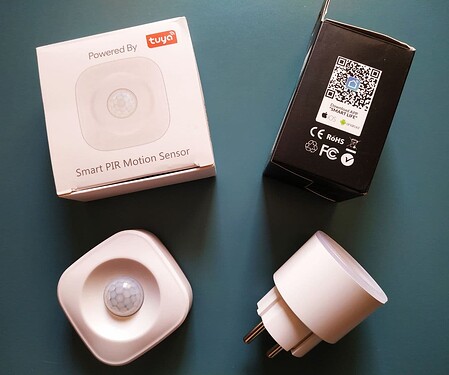With our recent releases, Apilio’s flexiblity to get information from different devices and control them has increased significantly. But you might be wondering if a device works well with Apilio, and how to connect it best. Here we’ll give you some tips to choose which is the best way to connect a device to Apilio.
Four ways to get your device or sensor data to Apilio
At the time of writing, Apilio has 4 ways of receiving sensor or device information:
- Via our Tuya (Smart Life) native integration
- Using our IFTTT native integration
- Via web hooks (HTTP requests sent to Apilio)
- Using our REST API
 Connect a device to Apilio using our Tuya integration
Connect a device to Apilio using our Tuya integration
Check if your device is Tuya-compatible if the box says “works with Tuya” or “works with Smart Life”. Alternatively, check if the device’s brand own app is remarkably similar to the Tuya app (for example compare with the screenshots on the Google App store)
The device packaging can tell you if the device is Tuya or Smart Life compatible. These two devices for example can use any of those two apps (because they are the same app) and the brand didn’t create a specific custom app for their devices:
If the devices have a specific app, it might take some digging to figure out if they are Tuya-compatible. The easiest I’ve found is to have a look at the app and check if it is very similar to Tuya or search for brand name + Tuya to see if you get more details.
Zigbee devices
If you have a Zigbee device of any brand, you might be able to pair it with a Zigbee hub from the Tuya galaxy. Not all Zigbee devices follow the standards, so a successful pairing is not guaranteed. But if it does pair, you most probably can use the Zigbee device with Apilio through the Tuya integration.
 Connect a device to Apilio using our IFTTT integration
Connect a device to Apilio using our IFTTT integration
To know if your device is IFTTT compatible, check if your device’s brand can be found here: https://ifttt.com/services The device’s website or packacking will probably also say if it “works with IFTTT”.
Look out for this badge:
To be able to use IFTTT-integrated devices with Apilio, you’ll need to store their data (if you need to consult it for a Logicblock that combines several conditions, some of them being powered by IFTTT), in an Apilio variable. Apilio allows you to save this information “in memory”, so you can create more complex and bespoke automations. As an example, have a look at how to update a boolean variable in Apilio.
If you don’t need to store the device information, you can just use it to trigger a Logicblock by creating an applet in IFTTT that if “this device does something” then “evaluate Logicblock XYZ”.
 Connect a device to Apilio via webhooks (HTTP Request)
Connect a device to Apilio via webhooks (HTTP Request)
Many brands, big and small offer webhooks connectivity to their devices. Check the brand’s docs and website!
Web hooks are relatively easy to develop, so many brands will offer them as a connectivity option to maximize the ways their products can connect to other platforms. They are relatively easy to use (you need to carefully copy and paste very long links and maybe configure a couple more details).
Check your device’s documentation or brand website and search for “webhooks”. If you need more information on how these work:
- here’s our article on incoming webhooks (getting data from devices into Apilio)
- here’s our intro to outgoing webhook actions (http actions that send data to other devices and services)
 Connect a device to Apilio via our REST API
Connect a device to Apilio via our REST API
Go all-in with our API if you are connecting a DIY platform, or an open source platform like Home Assistant, building your own script, or combining Apilio with a device that can be controlled through API requests.
This can help you achieve a very custom control of your devices and Apilio, build your own smart displays,… Sound exciting? ![]() Here’s our API documentation. This option is the most time-consuming to setup, but also offers the biggest customization.
Here’s our API documentation. This option is the most time-consuming to setup, but also offers the biggest customization.


